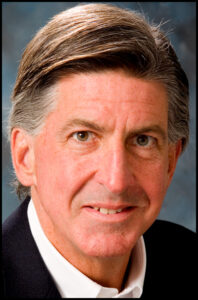
There's more to a discussion item about Downtown Santa Monica development brought forth by Councilman Kevin McKeown (with support from Tony Vazquez and Ted Winterer) at last Tuesday's City Council meeting than meets the eye.
They hoped that council would approve asking staff to come up with recommendations to freeze approvals of development agreements for three high-rise hotels until after a draft Downtown Specific Plan (DSP) is approved sometime around March, 2014.
The discussion item sponsored by the council's three slow-growth advocates was seen by many observers as a test to see if any of the pro-development council persons — Terry O'Day, Pam O'Connor, Bob Holbrook and Gleam Davis — would support even a modest measure to prevent any oversized developments from becoming a reality before a comprehensive plan for Downtown was determined.
McKeown and company wanted a temporary hold on approvals for proposed developments that exceeded the current Downtown height code of 84 feet pending new height recommendations forthcoming in the new DSP. McKeown also felt the heated debate and rancor over the hotel towers was interfering with civil public input and that a "cooling off period" was needed.
As it turns out, a freeze wouldn't stop developers of three Ocean Avenue projects — the Miramar renovation (at Wilshire Boulevard) with its 21-floor central tower, the 22-floor Frank Gehry-designed hotel at Santa Monica Boulevard and the Wyndham Santa Monica near the Santa Monica Pier (formerly the Holiday Inn) with its 15-floor, 174 foot tower on Colorado Avenue — from moving forward with their projects
City Attorney Marsha Moutrie reminded council that developers, "have a right to insist on processing" and could still do planning and outreach. However, deliberation on the projects by the Architectural Review Board, Planning Commission and City Council would be held back.
It was no big deal because the "big three" projects wouldn't be ready for presentation until after March, 2014. Ocean Avenue is not in the official Downtown planning area and has its own zoning parameters. So, the whole exercise was moot. Nevertheless, O'Connor, Holbrook and Davis still voted against the request. With O'Day absent, the 3-3 tie meant it was dead as a doornail.
The development controversy has two basic camps. On one side are the developers and business interests who see an orderly, City Hall-friendly development process as a way to generate more community revenue, increase property values, add more jobs and maintain a growing, thriving city.
On the other side are the slow or no growthers — residents and political activists who see the flood of developments as a major contributor to unconscionable traffic, parking and congestion problems. They say the rush to develop is destroying the character and livability of "this iconic beach town."
Much anger has been directed at the three pending high-rise hotel projects. Detractors say they'll block light and air. A wall of high rises along Ocean Avenue will turn Santa Monica into another Miami Beach. They'll be the community's "Armageddon." It's all nonsense.
The real "Armageddon" is the dozens of four- to eight-floor, mixed-use buildings (as called for in the Land Use and Circulation Element or LUCE) that will forever alter Lincoln Boulevard, Second, Fourth, Fifth, Sixth and Seventh streets, Broadway, Colorado Avenue and Santa Monica and Wilshire boulevards near Downtown and major thoroughfares directly adjacent to existing residential neighborhoods in many other parts of town.
The thousands of new, mostly market rate housing units and dozens of smaller, ground-floor retail stores, markets and incidental food outlets in these proposed buildings are what will really add to crowding, jam traffic, usurp parking and aggravate congestion.
Mayor O'Connor pointed out that the high-rise controversy "has been driven by a political campaign to stop the Miramar." She's correct. O'Connor's referencing the hysterical, "sky is falling" disinformation campaign concocted to kill the Miramar remodel by the owners of the neighboring (17-floor) Huntley Hotel and their hired gun/political consultant Sue Burnside.
A few new high rises Downtown will give the community character. They add interest and excitement to the skyline. I also agree with Councilwoman Davis about not wanting to see a city packed with boring, four-floor buildings like the Water Garden.
The failure to delay official approvals for taller developments amplifies the schism on the City Council. Many residents were curious to see who, if anybody, would join with McKeown, Winterer and Vazquez. Holbrook and O'Connor stayed true to their pro-development voting record and probably blew support in the 2014 election from constituents concerned about overdevelopment.
Most Santa Monicans now realize that as long as O'Connor and Holbrook are on the dais, developers will have enough votes to get their projects approved. It's widely agreed that if O'Connor and Holbrook couldn't even throw the slow growthers a bone by putting large developments on hold pending a complete Downtown plan, their re-election chances would be nil. There's already buzz about possible replacements for them come 2014.
Slow-growth activists will have to wait until 2016 to remove Davis and O'Day, who also have strong pro-development voting records.
Vazquez and Winterer also have until 2016 on the dais but McKeown's term is up next year. His request to push the development brakes has endeared him to a wide coalition of residents and activists who see 2014 as the showdown year and the right time to reverse the course of development in the city.
Bill can be reached at mr.bilbau@gmail.com.









